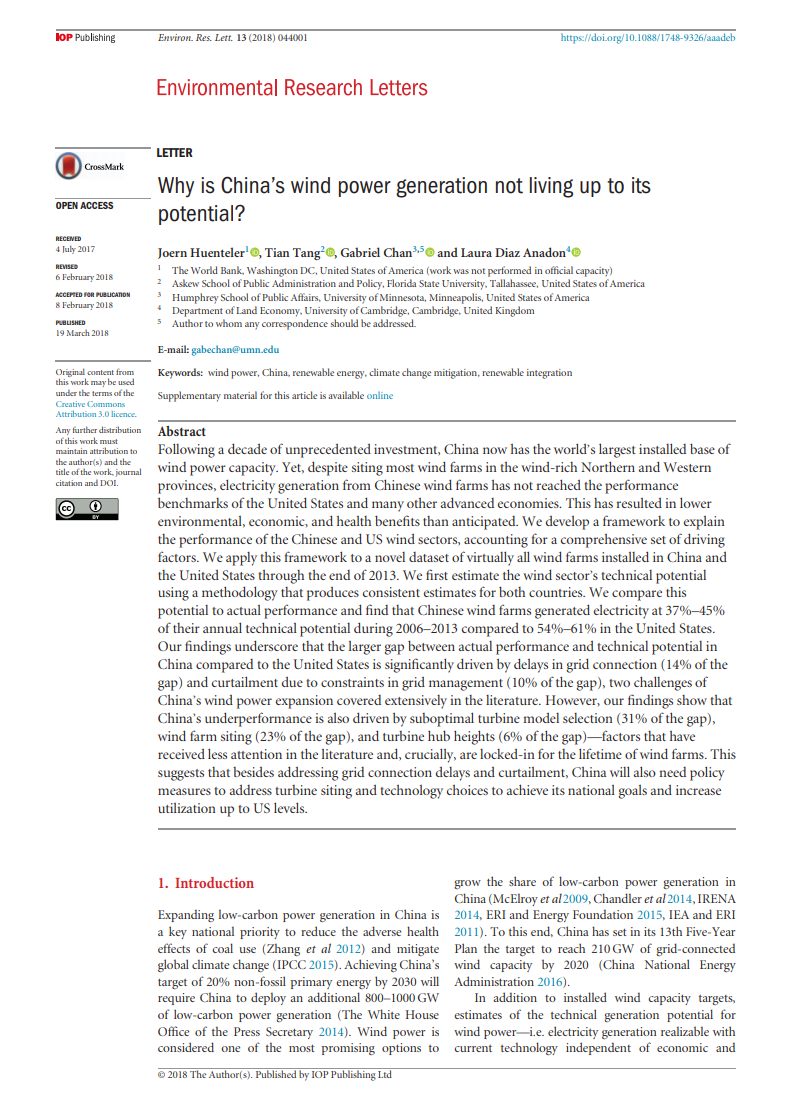Why Is China's Wind Power Generation Not Living up to Its Potential?
Recommended Citation:
Huenteler, Joern, Tian Tang, Gabriel Chan, and Laura Diaz Anadon. "Why is China’s wind power generation not living up to its potential?" Environmental Research Letters (2018).
Abstract
Following a decade of unprecedented investment, China now has the world's largest installed base of wind power capacity. Yet, despite siting most wind farms in the wind-rich Northern and Western provinces, electricity generation from Chinese wind farms has not reached performance benchmarks of the United States and many other advanced economies. This has resulted in lower environmental, economic, and health benefits than anticipated. We develop a framework to explain the performance of the Chinese and U.S. wind sectors, accounting for a comprehensive set of driving factors. We apply this framework to a novel dataset of virtually all wind farms installed in China and the U.S. through the end of 2013. We first estimate the wind sector's technical potential using a methodology that produces consistent estimates for both countries. We compare this potential to actual performance and find that Chinese wind farms generated electricity at 37–45% of their annual technical potential during 2006–2013 compared to 54–61% in the U.S. Our findings underscore that the larger gap between actual performance and technical potential in China compared to the U.S. is significantly driven by delays in grid connection (14% of the gap) and curtailment due to constraints in grid management (10% of the gap), two challenges of China's wind power expansion covered extensively in the literature. However, our findings show that China's underperformance is also driven by suboptimal turbine model selection (31% of the gap), wind farm siting (23% of the gap), and turbine hub heights (6% of the gap)—factors that have received less attention in the literature and, crucially, are locked-in for the lifetime of wind farms. This suggests that besides addressing grid connection delays and curtailment, China will also need policy measures to address turbine siting and technology choices to achieve its national goals and increase utilization up to U.S. levels.
Keywords
wind power, China, renewable energy, climate change mitigation, renewable integration

